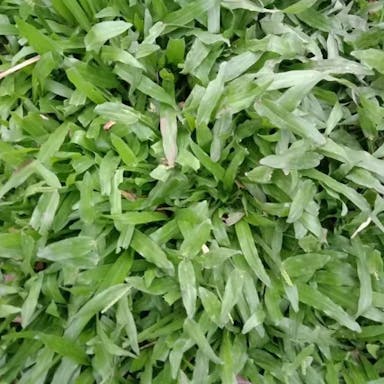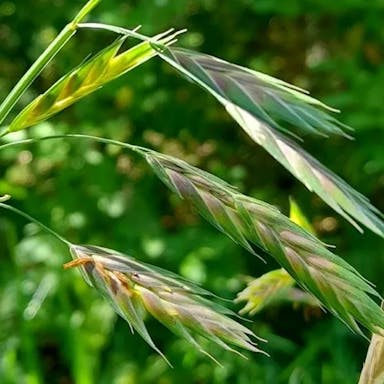For Hard fescue, watering frequency should be moderate, typically once every 7-10 days during the growing season. This grass species prefers well-draining soil to prevent waterlogging, which can lead to root rot. In hot summer months, increase watering frequency to once every 5-7 days, ensuring the soil remains consistently moist but not waterlogged. During winter dormancy, reduce watering to once every 2-3 weeks to prevent excessive moisture in the soil. Monitor soil humidity by checking the top 2-3 inches for dryness before watering. Adjust watering amounts based on weather conditions to maintain optimal soil moisture levels for Hard fescue.
Hard fescue
- Scientific name
- Festuca trachyphylla
Basic Information
- Poaceae Family Festuca Genus Hard fescue Species
- Poaceae > Festuca > Festuca trachyphylla
- 83%
- The Completeness of This Encyclopedia
Please help us complete the encyclopedia, Terrarium is a encyclopedia service to be completed with everyone in the world. Currently, this page is 83% complete. For more information on how to contribute, please click here.
- Graminoid
- Height
- 30cm ~ 60cm
- Flower Color
- Leaf Color
- Anthesis
- summer
- Sunlight Exposure
Full Sun Long hours of sunlight from morning to afternoon Partial Shade A location in the shade of a tree or where either the morning or afternoon is shaded Full Shade A place where there is no direct sunlight
- Full Sun
- Hardiness Zones
This is an indicator to know to which zone each plant can winter. Knowing the zone of each plant gives you an idea of the cold temperature resistance when grown in the ground without a roof. 2: -42.7 to -40.0 3: -39.9 to -34.4 4: -34.3 to -28.9 5: -28.8 to -23.3 6: -23.2 to -17.8 7: -17.7 to -12.2 8: -12.1 to -6.7 9: -6.6 to -1.1 10: -1.0 to 4.4 11: 4.5 to 10.0
- 4-9
- Cold resistance
- Excellent
- Heat resistance
- Fair
- Habitat of origin
- Europe
- Growth Rate
- Normal
What is Hard fescue (Festuca trachyphylla)?
What is Hard fescue (Festuca trachyphylla)
Flower meaning
Hard fescue thrives in full sun to partial shade, preferring at least 6 hours of direct sunlight daily. It exhibits excellent cold tolerance, making it suitable for cooler climates. The plant can withstand heat but may benefit from some shade in extremely hot regions. It thrives in temperatures ranging from 60-75°F (15-24°C) but can tolerate colder conditions. During summer, adequate watering is crucial to prevent wilting. In winter, the plant may become dormant but will regrow in spring. Hard fescue should be placed in well-draining soil to avoid waterlogging. It is resilient to drought once established. Optimum sunlight exposure promotes healthy growth and lush foliage.
Calendar of Hard fescue (Festuca trachyphylla)
Calendar
Hard fescue, scientifically known as Festuca trachyphylla, is a perennial grass native to Europe and Asia. It is characterized by its fine, narrow leaves and dense, tufted growth habit. The plant typically produces inconspicuous flowers in the form of small spikelets, which can vary in color from green to purple. Hard fescue is often used in landscaping and restoration projects due to its drought tolerance and ability to thrive in poor soil conditions. It is commonly found in dry, rocky habitats and is known for its low maintenance requirements. The grass can reach heights of up to 18 inches and forms dense clumps over time. There are several varieties of Festuca trachyphylla available, each with its unique characteristics and adaptations. The plant does not produce any significant fruit and is primarily grown for its ornamental value and erosion control properties.
How to grow Hard fescue (Festuca trachyphylla)
Watering
Hard fescue thrives in well-drained, slightly acidic to neutral soils with a pH range of 5.5 to 7.0. It prefers sandy loam or loamy soils that are rich in organic matter. Fertilize hard fescue in early spring with a balanced slow-release fertilizer, applying approximately 1 to 2 pounds of nitrogen per 1,000 square feet. During the growing season, additional nitrogen applications may be necessary every 6 to 8 weeks, but avoid excessive nitrogen as it can lead to thatch buildup. Regular soil testing can help determine the specific nutrient needs of hard fescue. Avoid fertilizing in late fall to prevent excessive top growth before winter dormancy.
Soil and Fertilizer
Hard fescue is best potted in well-draining soil with a pH of 5.5-7.0. Ensure the pot has drainage holes to prevent waterlogging, and place it in a location with partial shade. When planting, sow seeds 1/8 inch deep and keep the soil consistently moist until germination. For repotting, choose a slightly larger pot and refresh the soil every 2-3 years to maintain plant health. Mist the plant occasionally to increase humidity, and fertilize sparingly during the growing season.
Sunlight and Place
Hard fescue benefits from periodic pruning to maintain its health and appearance. Pruning helps remove dead or damaged foliage, promoting new growth and improving air circulation. The best time to prune Hard fescue is in early spring before new growth emerges. To prune, use sharp, clean tools to avoid damaging the plant. Cut back the foliage to about 2-3 inches above the ground level. After pruning, water the plant thoroughly to help it recover and encourage new growth. Avoid over-pruning, as it can stress the plant. Regular pruning will help Hard fescue thrive and remain attractive in your garden.
Advanced Information of Hard fescue (Festuca trachyphylla)
Pruning
Hard fescue can be propagated through seeds, division, and occasionally by cuttings. Seeds are sown in well-draining soil in early spring or fall, kept moist until germination. Division involves separating clumps of the plant in early spring or fall, ensuring each division has roots attached. Cuttings can be taken from new growth in spring or early summer, placed in a rooting hormone, and planted in a moist medium. Leaf cuttings are less common but can be taken from healthy leaves, placed in a rooting hormone, and planted in a suitable medium. To ensure successful propagation, it is best to use a combination of methods to increase the chances of success and to multiply the plant efficiently.
Planting and Harvest
Hard fescue is susceptible to various pests and diseases, including fungal pathogens like dollar spot, red thread, and rust. These diseases can cause discoloration, thinning, and ultimately death of the plant. Pests such as nematodes and insects like billbugs and chinch bugs can also infest hard fescue, leading to wilting and stunted growth. To prevent these issues, proper cultural practices such as regular mowing, adequate watering, and proper fertilization are essential. Additionally, ensuring good air circulation around the plant can help reduce the risk of fungal diseases. Monitoring the lawn regularly for signs of pests or diseases and taking prompt action can also help in preventing severe damage.
Propagation
Hard fescue typically blooms in late spring to early summer in the United States. The flowers are at their best during the month of June. Blooming occurs once a year, lasting for about 2-3 weeks. To extend the blooming period, deadhead the flowers regularly to encourage new blooms. Additionally, providing adequate sunlight and well-drained soil can help promote longer blooming. Hard fescue's flowering time is crucial for pollination and seed production. This plant's blooming season contributes to its ecological role in supporting local wildlife and maintaining biodiversity.
Pests and Diseases
Hard fescue offers several varieties suitable for different conditions: 'Aurora' for shade tolerance, 'Cindy Lou' for drought resistance, and 'Biljart' for improved turf quality. When selecting seeds, ensure they are fresh, uniform in size, and free from debris. Opt for seedlings with healthy roots, sturdy stems, and vibrant green leaves. Check for any signs of disease or pest damage before purchasing. It is essential to choose varieties that align with your specific growing conditions to ensure successful establishment and growth. Conduct thorough research on the characteristics of each variety to make an informed decision.
Habitat of Hard fescue (Festuca trachyphylla)
Habitat
Toxicity of Hard fescue (Festuca trachyphylla)
Health Benefits
- edible
- Inedible
- Toxic
- No toxicity
NO DATA
Toxic for dogs and cats
NO DATA






